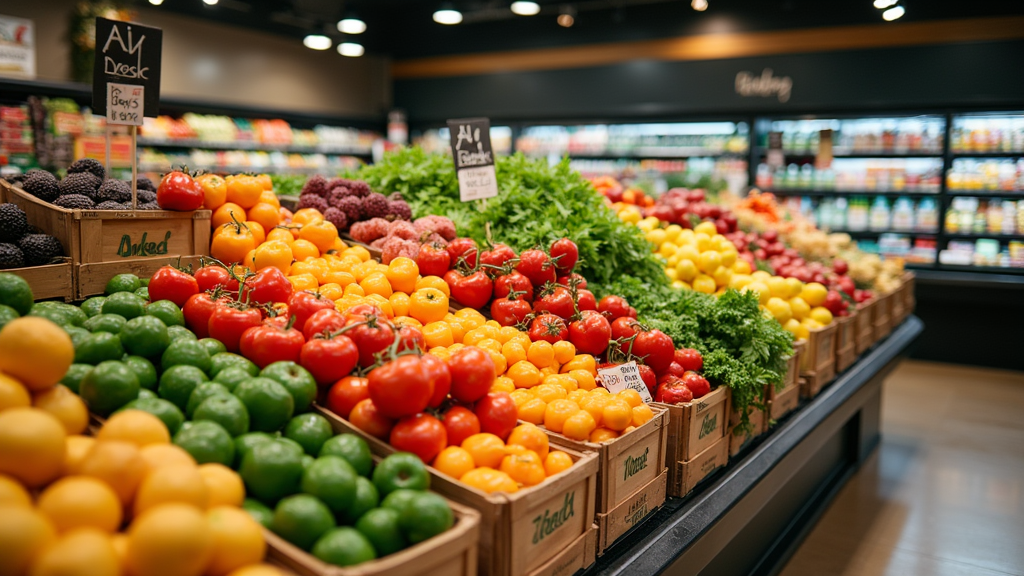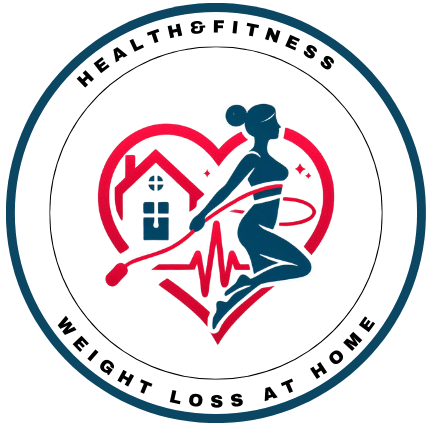Grocery shopping plays a pretty big role in supporting weight goals. Every trip to the store shapes what ends up in the fridge and pantry, and ultimately, on my plate. With so many options and tempting snacks staring back from the shelves, it’s not always easy to stay on track. That’s why understanding a few smart shopping strategies helps turn grocery trips into a splash zone for healthier eating, especially when working toward weight loss.

Why Good Grocery Habits Matter for Weight Loss
The way I shop for groceries can make sticking to healthy habits way less of a hassle. By stocking up on nutrientpacked foods and leaving ultraprocessed snacks behind, I set myself up for success during the week. Research from the CDC points out that replacing processed foods with whole foods makes it easier to manage calories and feel full longer. So, even just changing how I browse the aisles impacts overall results.
A lot of weight management comes down to consistency at home. What I choose to bring in makes a big difference. Focusing on smart grocery shopping takes away some of the willpower battles because healthy, readyto-go options are within reach. This creates an environment where making better choices feels more automatic and less stressful.
Getting Started: Setting Up for Smart Shopping
Good grocery shopping starts before I even grab a cart. Planning ahead makes a huge difference and helps avoid lastminute splurges that can throw off healthy intentions. Taking some time to write out a rough meal plan and list is super useful for keeping things focused.
A few key steps help me get started:
- Make a meal plan for the week: Even if I don’t stick to it perfectly, sketching out dinners and maybe lunches helps guide shopping decisions.
- Write a detailed grocery list: Listing out exactly what I need for recipes cuts down on “impulse” shopping and reduces food waste.
- Avoid shopping when hungry: Sounds simple, but it’s true! I make way better choices and spend less when I shop on a full stomach.
Preparing ahead often means a smoother shopping experience and fewer temptations along the way. Apps like Paprika or even just a notes app come in pretty handy for storing weekly meal ideas or shopping lists.
Stocking Up: Smart Picks for Your Cart
Finding your way through the grocery store gets easier with some goto choices in mind. I focus on filling my cart with foods that not only support weight loss but also keep me energized and satisfied. Here’s how I break it down:
- Fruits and vegetables: I aim for a mix of colors and textures. Fresh, frozen, or even canned (lowsodium or no sugar added) are all good choices. These add fiber and volume to meals without piling on the calories.
- Lean proteins: Items like chicken breast, turkey, fish, beans, lentils, eggs, and tofu are staples. Protein not only helps build muscle but also keeps me feeling fuller, longer.
- Whole grains: Oats, brown rice, wholewheat pasta, quinoa, and barley are all options worth considering. Whole grains offer more fiber than refined grains and digest more slowly, which is great for feeling satisfied.
- Healthy fats: A handful of nuts, seeds, avocados, and olive oil add flavor and nutrition without overdoing calories. Bottled dressings and spreads are more of an occasional thing, since they can hide sneaky sugars and unhealthy fats.
- Dairy or alternatives: Choosing lowerfat or unsweetened versions of yogurt, milk, or plantbased milks is an easy way to get calcium and protein in.
Focusing on these sections helps keep my cart (and meals) balanced. Shopping the perimeter of the store usually helps me stick to fresh produce and whole foods, while the center aisles typically carry more packaged and highly processed options.
Quick Guide to Building a Healthy Shopping Routine
Making a few tweaks to the way I shop can have a big impact on both my pantry and my progress. These steps help me keep grocery trips efficient and aligned with weight loss goals:
- Shop with a list: Having a list ready is my cheat code for avoiding random snack grabs.
- Start with produce: Loading up my cart with vegetables and fruit first means there’s less space and fewer excuses for tossing junk food in later.
- Read nutrition labels: If a packaged item has lots of added sugar, saturated fat, or unrecognizable ingredients, I’ll usually skip it.
- Stick to healthier swaps: I swap white bread for whole grain, sugary drinks for sparkling water, and heavy dressings for olive oil and vinegar.
- Limit sugary and processed snacks: If it’s not in my house, I’m less likely to eat it.
Pairing these tips with a focus on nutrientdense foods helps keep meals interesting without sacrificing taste or satisfaction.
Challenges I’ve Faced, and How to Handle Them
Grocery shopping for weight loss isn’t all smooth sailing. I’ve definitely run into a few common hurdles along the way. Here’s what I’ve learned about the trickiest challenges and some ways to work around them:
- Temptations in every aisle: Chips, cookies, and sales galore can be distracting. Sticking to my list and avoiding aisles that don’t have what I actually need makes staying on track easier.
- Budget constraints: Healthy food sometimes looks pricier up front, but planning meals ahead and choosing frozen over fresh for some produce helps keep costs down. Buying in bulk also works for pantry staples like beans, rice, and oats.
- Dealing with limited time: Prechopped veggies, rotisserie chicken, and healthy freezer meals save me on busy weeks without derailing healthy habits.
- Family requests and picky eaters: I meet in the middle by prepping a few crowdpleasers that still align with my goals, or I batchcook sides so everyone gets what they like.
Budget-Friendly Strategies
Healthy grocery hauls don’t have to mean a pricey checkout. I compare prices, use coupons or store loyalty apps, and look for sales on items I use often. Seasonal fruit and veggies are often cheaper and fresher, too. Cooking at home in bulk, then freezing leftovers, keeps both my wallet and my meal plan happy.
Handling Cravings
Sometimes it just takes one trip down the snack aisle to derail the bestlaid plans. I manage cravings by having healthy snacks, like popcorn, Greek yogurt, or fruit, on hand. Occasionally allowing myself a treat, instead of fullon deprivation, keeps things sustainable and enjoyable.
Expert Shopping Tips for Extra Support
I’ve picked up a few advanced shopping tricks from nutritionists and food bloggers over the years. These strategies help me stay ahead of common pitfalls:
Buy singleingredient foods: Items with just one ingredient (think brown rice, chicken breast, broccoli) usually mean less added sugar and salt.
Keep healthy standbys stocked: Foods like eggs, spinach, beans, and frozen berries make throwing together quick, balanced meals much simpler.
Shop in bulk for basics: Stocking up on healthy staples can save money and mean fewer lastminute trips to the store.
Don’t shop tired or stressed: Decision fatigue can lead to impulse buys. Shopping at a time when I’m relaxed makes better choices more likely.
Another trick I’ve found helpful is to focus on cooking simple, staple meals that can be easily adjusted in quantity or flavor. Dishes like stirfrys, sheet pan dinners, and large salads keep meal prep simple, while giving lots of room to mix up the ingredients to avoid getting bored. I also check out local farmers markets for fresh, seasonal options when possible, often finding new produce and savings that way. Making shopping social sometimes helps too; bringing a friend or family member can keep me accountable and make the process more enjoyable.
Practical Examples of Healthy Grocery Shopping
Reallife scenarios help bring these tips together. Here’s a typical weekly list and how I put it to work in my routine:
- Produce: Mixed greens, tomatoes, carrots, bell peppers, apples, bananas, and frozen berries for smoothies.
- Proteins: Chicken breast, eggs, lowfat Greek yogurt, canned beans, extrafirm tofu.
- Grains: Brown rice, wholewheat wraps, rolled oats.
- Healthy fats: Avocados, raw almonds, flaxseed.
- Treats in moderation: Dark chocolate (a few squares after dinner works for me).
Along with these, having stocks of herbs and spices, canned tomatoes, and broth for soups can make quick weekday meals a breeze. With batches of soup or stirfry prepped and ready, snacks like apple slices with nut butter, and fresh salad greens washed for quick lunches, it’s way easier to stay on track, even when my schedule gets hectic.
Frequently Asked Questions
These questions come up pretty often for people starting out with weightfocused grocery shopping:
Question: Is it okay to include treats or dessert in my cart?
Answer: There’s no reason to cut out favorites entirely. Moderation is the focus. Portion out treats and plan when you’ll enjoy them so they don’t crowd out healthier choices.
Question: How do I avoid processed foods with hidden sugars and fats?
Answer: Stick with foods that have minimal ingredients and check nutrition labels for hidden extras, especially in sauces, dressings, and cereal bars.
Question: What if I can’t always find fresh produce?
Answer: Frozen and canned produce (choose options without added sugar or salt) are good alternatives. They’re picked and packed at peak ripeness, so they’re just as nutritious.
Final Thoughts
Developing solid grocery shopping habits goes a long way in making weight loss sustainable. Taking time to plan, sticking to a list, and filling the cart with whole foods puts me in a good place to meet my goals, no gimmicks required. The more these habits become second nature, the easier it is for me to feel confident about my choices, both in the store and at home.
